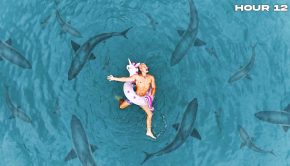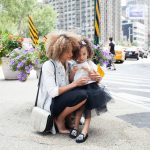Interdisciplinary Study Techniques: Blending Art and Science for Academic Success
Discover on right here on thehypemagazine.com how blending art and science can enhance your college learning. Boost your grades with these interdisciplinary study techniques. Read now for academic success!
As college students navigate the demanding landscape of higher education, finding effective study strategies is crucial. While the separation of disciplines into silos like ‘art’ and ‘science’ has long been a traditional approach, today’s academic environment calls for a more integrated and holistic method. This is where interdisciplinary study techniques come into play, combining diverse fields to enrich learning and foster innovative thinking.
In an age where information is at our fingertips, students might feel overwhelmed with the sheer volume of assignments and the pressure to excel. Here’s where a paper writing service that can do my homework for me can not only provide support but also inspire multifaceted learning strategies that are both effective and engaging.
The Fusion of Creativity and Analytical Thinking
Connecting Concepts Across Disciplines
The interplay between artistic creativity and scientific inquiry opens a pathway to a richer, more integrated understanding of both realms. When engaging with a scientific theory, immerse yourself in its world by visualizing it through drawing. This active engagement through art stimulates the brain differently than mere reading or listening, enhancing memory and understanding.
Moreover, when you craft a story around a scientific concept, you’re tapping into the power of narrative to make complex ideas more accessible. By doing so, you’re not just memorizing facts. You’re constructing a framework that links various domains of knowledge, fostering an intellectual agility that transcends traditional academic boundaries.
Creative Problem Solving
Venture beyond the conventional when faced with scientific quandaries. By adopting creative techniques such as mind mapping, which lays out ideas in a visual structure, or free writing, which allows for a free flow of thoughts, you can unlock alternative pathways to understanding.
These methods act as conduits for creativity, funneling and refining the chaotic brilliance of the mind into structured insights. They are not just tools for creation but are invaluable for dissecting and assembling complex scientific ideas in a manner that is both comprehensible and innovative.
Enhancing Memory and Retention
Visual Arts as Memory Aids
Incorporating visual arts into the study of science transcends traditional learning modalities. By designing diagrams, crafting sketches, or assembling infographics, you are engaging with the material in a method that is inherently more interactive and, therefore, more memorable.
The process of translating abstract concepts into concrete visual representations not only solidifies your grasp of the subject matter but also stimulates the visual cognitive resources of the brain, enhancing recall and retention. This tactile and visual interaction with academic content serves to embed knowledge deeper than rote memorization ever could.
Storytelling for Complex Theories
Narratives have the profound ability to simplify and humanize the abstract and the arcane. When you weave a complex scientific principle into a story, replete with characters, challenges, and resolutions, you anchor it within a context that resonates on a human level.
This practice is not just about creating mnemonic devices. It’s about building a mental model that aligns with the way our brains have evolved to process and retain information through storytelling. By embedding scientific theories within the familiar structure of a narrative, they become part of a larger, more coherent understanding of the world.
Practical Applications
Artistic Projects in Scientific Contexts
Delving into artistic projects that parallel your scientific studies can yield a more profound comprehension of the subject. If biology is your field of study, for instance, illustrating a cell’s anatomy or the sequence of mitosis can imbue these processes with vivid clarity.
Such artistic endeavors are not merely adjuncts to learning but are central to a holistic educational experience. They make the absorption of knowledge an active process, a kind of play that is as enjoyable as it is educational, ensuring that the information learned isn’t quickly forgotten.
Experimenting with Different Media
The exploration of scientific concepts need not be confined to the written word or the laboratory. Embrace the challenge of expressing these ideas through varied mediums. Whether it’s through the tactile form of clay modeling, the visual spectacle of digital animation, or the rhythmic patterns of music, each medium can offer new perspectives and insights.
By doing so, you are not just learning about science. You’re learning to communicate it in a universal language that speaks to different intellects and sensibilities.
Collaborative Learning: A Synergistic Approach
Study Groups with a Twist
When you assemble a study group that includes students from both the arts and the sciences, you create a fertile ground for cross-pollination of ideas. Such groups are far from the typical gathering of like-minded individuals. They challenge each participant to think differently and to present and justify concepts in ways that are comprehensible to diverse thinkers.
This kind of interdisciplinary interaction can be incredibly rewarding, leading to deeper insights and a more nuanced understanding of the material being studied.
Peer Teaching
The act of teaching peers is a reciprocal process that benefits both the instructor and the learner. When you engage in teaching scientific concepts through the lens of art or explain artistic processes using scientific terminology, you are not just sharing knowledge. You’re solidifying your own understanding.
As you articulate and present ideas in new and creative ways, you reinforce your mastery of the subject. Interdisciplinary peer teaching sessions are thus not only enjoyable but serve as a potent catalyst for reinforcing and expanding one’s knowledge base.
Conclusion
Merging art with science in your college studies can lead to a more engaging, memorable, and effective learning experience. This innovative approach not only prepares students for assignments and exams but also equips them with the skills to think creatively and analytically in their future careers. As you continue to grow and tackle new challenges, remember that the best thesis writing services can serve as a helpful resource in your academic journey, providing expert assistance when you need it most.
Tweet




































